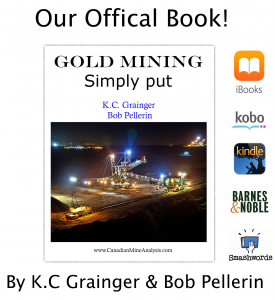Palos Management of Montreal, Superb Commentary
What is New on the Macro Level? By Hubert Marleau
The Fed Will Delay the Expected Interest Rate Liftoff to September 2015 The Federal Open Market Committee (FOMC)had a very lengthy debate on January 27-28 about its strategy and timing for raising its policy rate from the current 0.25% level. Put simply, the rate setters got cold feet and the sense of urgency wasn’t apparent. There are several factors that support this renewed cautious stance. Firstly, the sudden plunge in oil prices is keeping the inflation rate far away from the Fed’s target rate of 2.0%.
The producer price index for final demand decreased 0.8% in January, a much larger decline than consensus expectation. According to Larry Summers, prices are about 4.0% below where they would have been if 2.0% inflation had been maintained since 2007. Secondly, the Fed’s thinking now includes international considerations. The rising exchange value of the US dollar must be a concern for the Fed. It must be tough for the Fed to lift rates at this junction for the greenback is de facto tightening, decreasing the need to raise rates. The strong dollar’s impact is creating significant headwinds for US exporters and making US importers very competitive.
Additionally, the Bank of International Settlement has put out a “yellow warning sign” to companies and countries outside the US that have dollar denominated debt. As much as 9.0 trillion has been issued. A further rise in the exchange value of the US dollar combined with higher interest rates could be very problematic for them.
However, it should be noted that the Bureau of Labor reported very strong jobs numbers soon after the aforementioned FOMC meeting, swinging the views of many Federal Reserve officials in a hawkish direction and suggesting that a June rate hike should be firmly on the table.
They are worried that too late of a rise in rates could bring about excessive monetary accommodation, including rising inflation expectation and negative market responses.
Moreover, recently reported data points show:
- European growth is exceeding expectation running at the annual rate of 1.4%;
- The US economy is off and running and tracking 2.5% growth;
- Wage rates are likely to continue to drift up as the labour market tightens; and
- Inflation expectations have rebounded according to surveys compiled by the University of Michigan and expressions in the bond market for US Treasuries.
Based on these observations, a compromise between the hawks and the doves can be expected. The expected interest rate liftoff will certainly be delayed, perhaps to September; but an alteration to the Fed’s pledge to be “patient” is forthcoming.
A language change removing patience guidance will preserve optionality of doing away with the era of zero rate without actually being committed to doing so in June. It would give the Fed some flexibility. But, it will signal to the market that an increase in the Federal funds rate is possibly about.
P.S. The Fed reaffirmed its long term objectives. It did not change its inflation target of 2.0% or estimates of full employment at 5.4% unemployment rate. The latter goal will likely alter to 5.0% because of changing demographics.
As a matter of fact, the pool of non-depending employable that is unemployed is very large by historical standards.
P.P.S. The project to normalize interest rates is complicated because we live in extraordinary times filled with many known unknowns. While conventional wisdom is calling for an interest rate liftoff in 2015, views on the tightening cycles widely vary with large gaps:
- Deutsche Bank calculates that the average cumulative rate rise over the last twelve tightening cycles between 1954-2006 comes to 531 bps.
- Stripping out cycles that coincided with very high inflation periods, the average rate rise falls to 355 bps.
- The FOMC’s average forecast is that the current cycles will take the Federal Funds Rate to 3.25%.
- The markets predict that the Fed will raise its policy rate to 2.00% over the course of the next cycle.
- The Palos monetary model suggests that the upcoming liftoff will lead to a policy rate of only 1.25% at peak.
P.P.P.S. Volatility will characterize the bond market for the next few years. Asset managers live and die by their interest bets. It will be difficult for the battery of junior traders on Wall Street to deal with varying outlooks after years of ultra-low rates have become integrated into the very fabric of the market. It is now eleven years since the Fed last began raising interest rates. Wall Street is peppered with unseasoned market participants.
There has not been any period that I know of where so many traders and speculators do not have first-hand experience with points of inflection or have never encountered an up cycle in policy rates.
